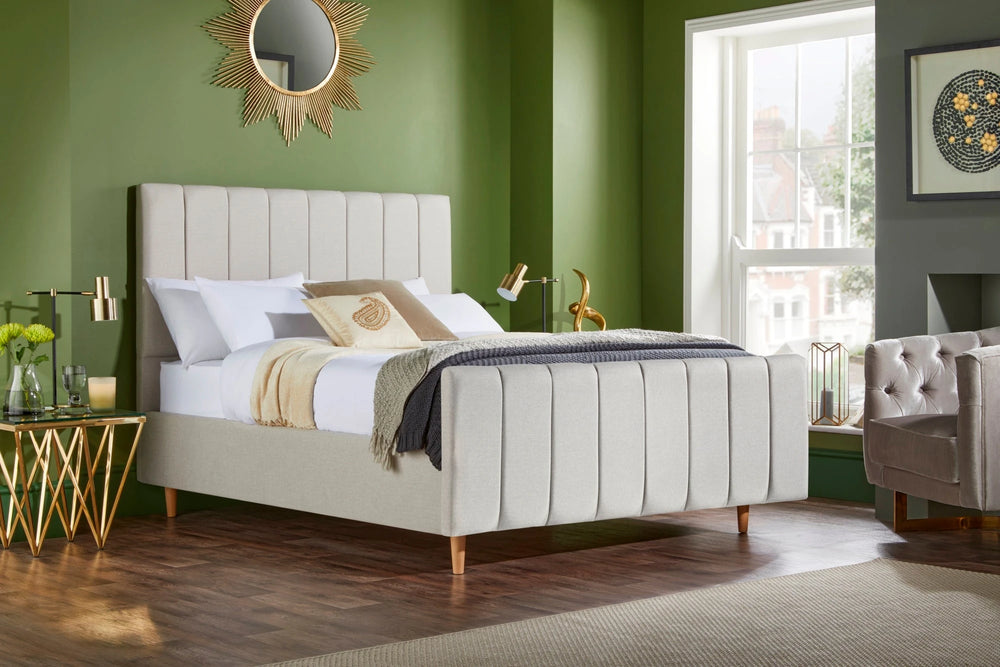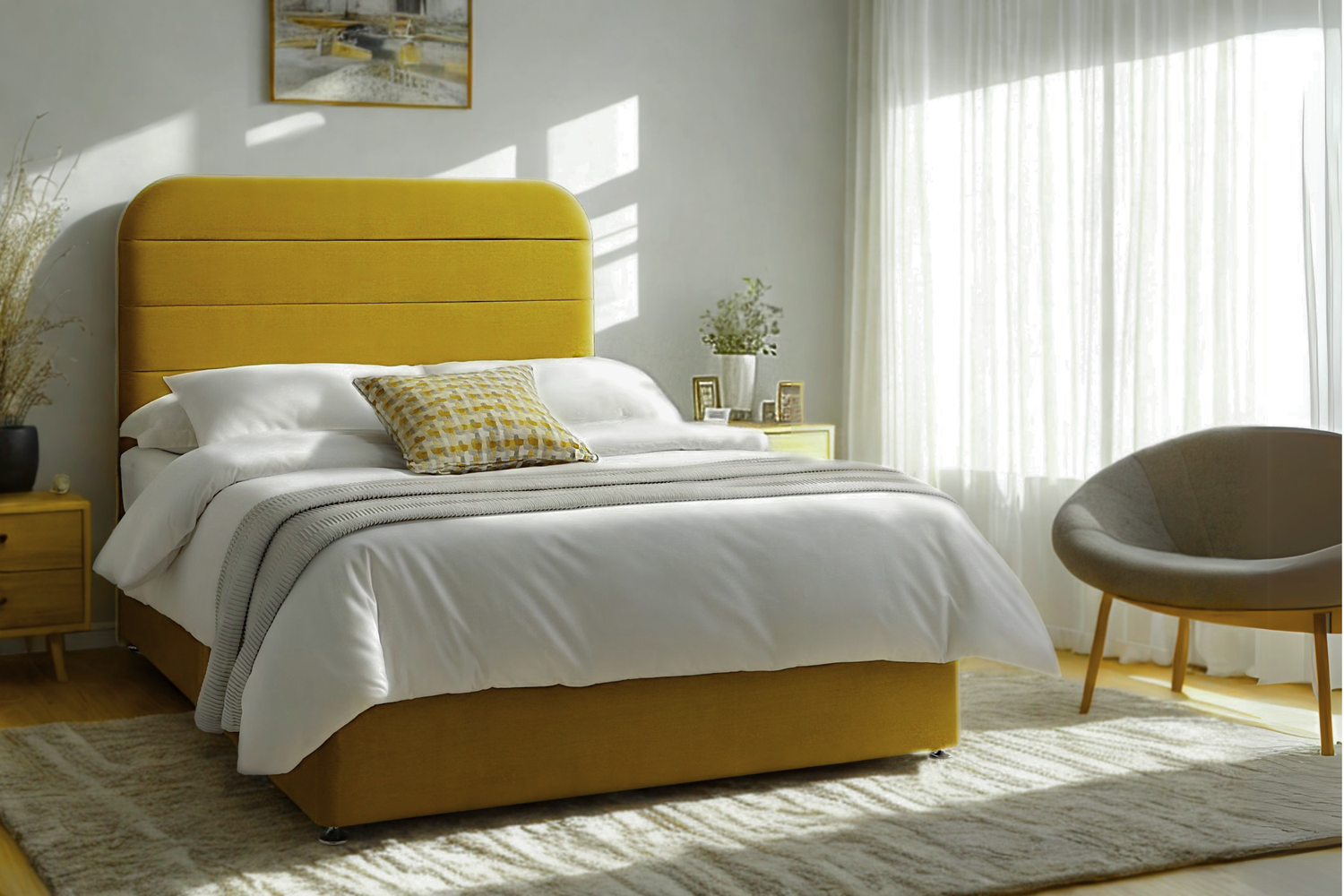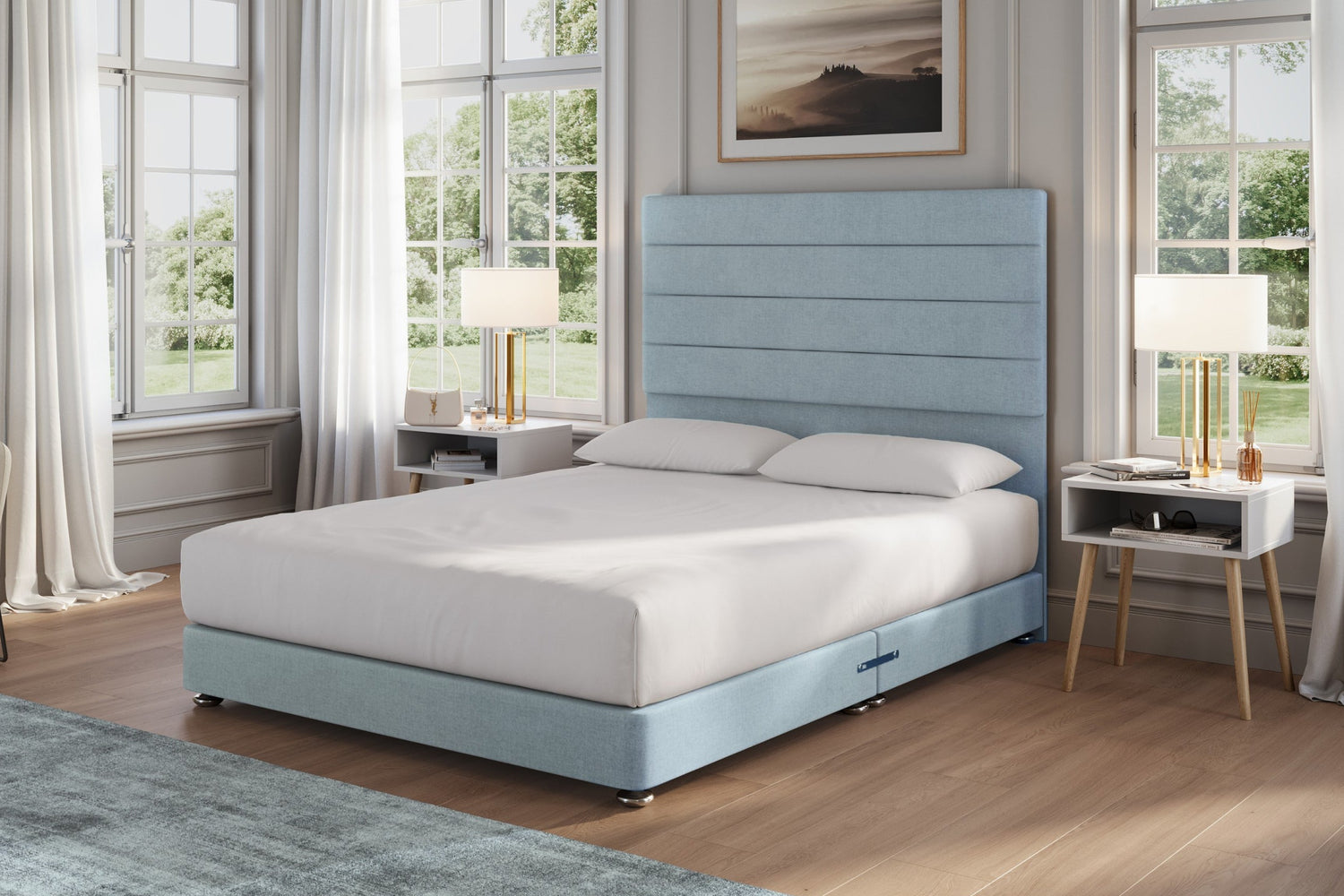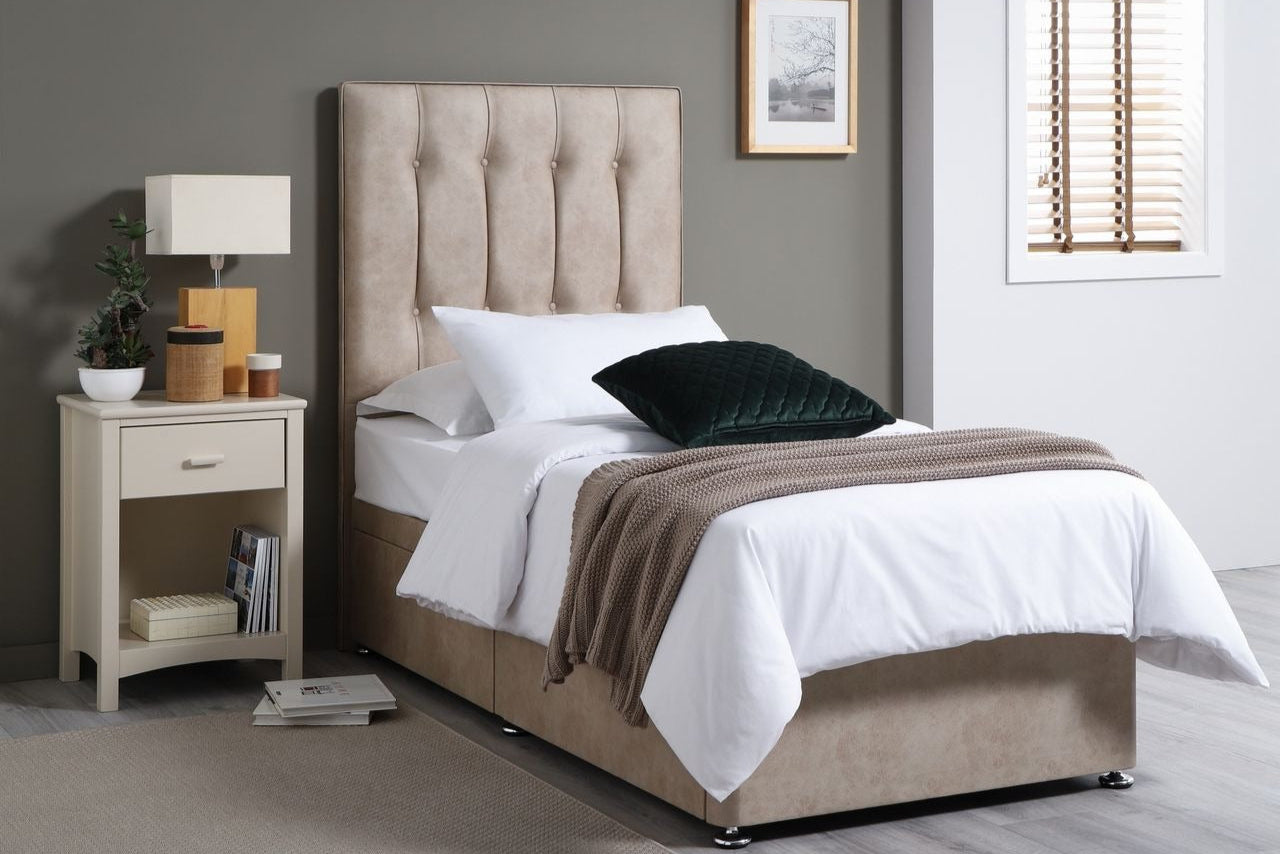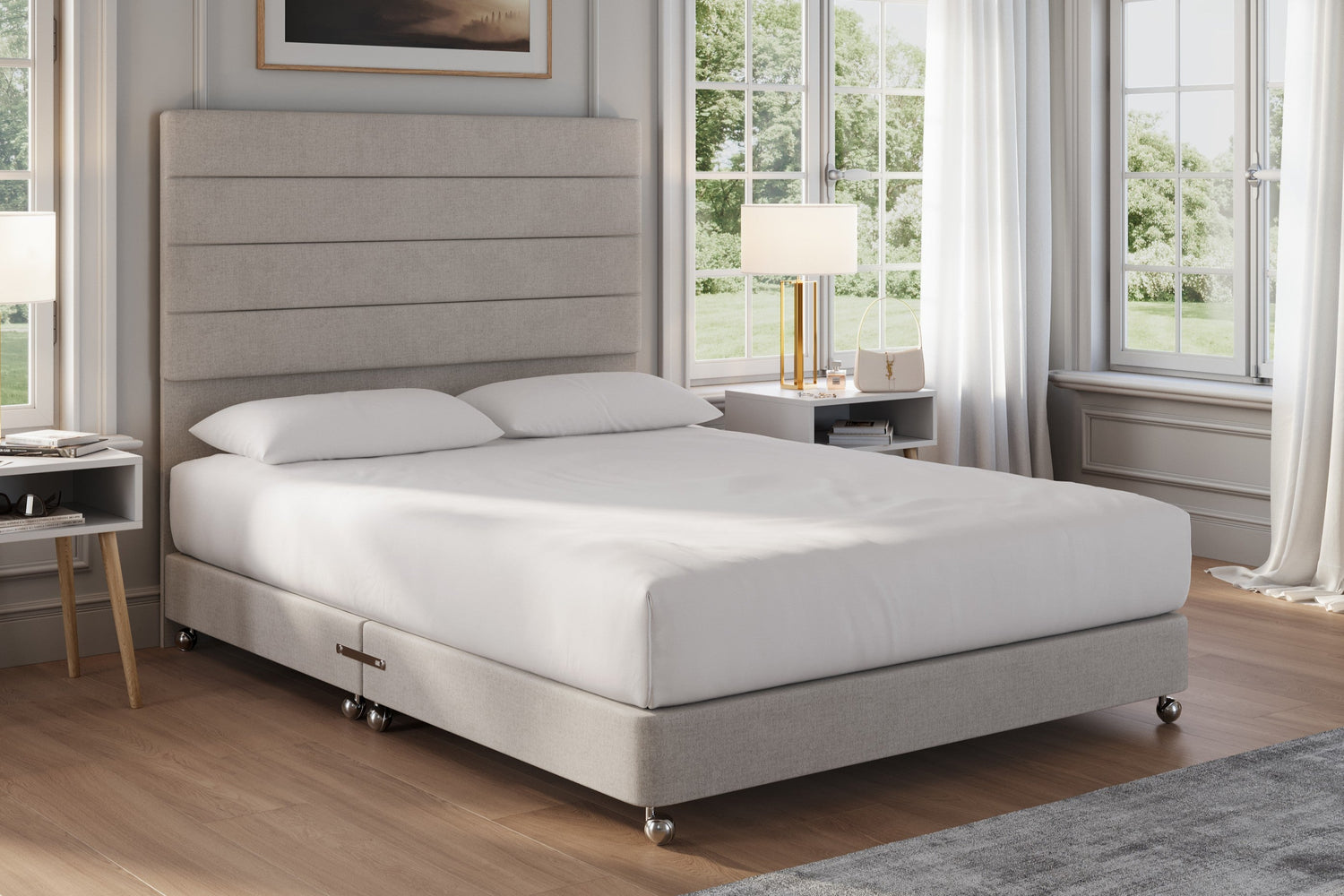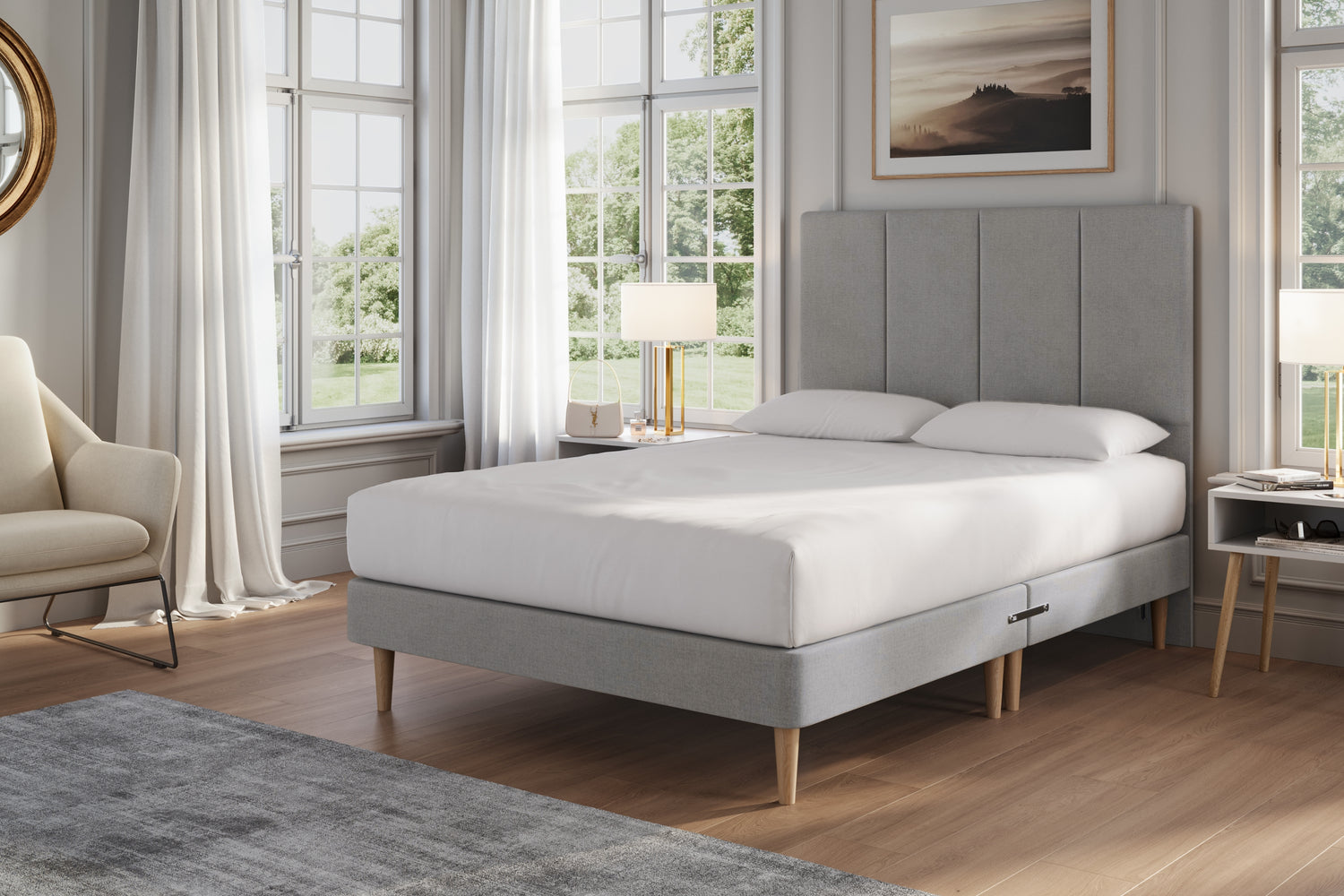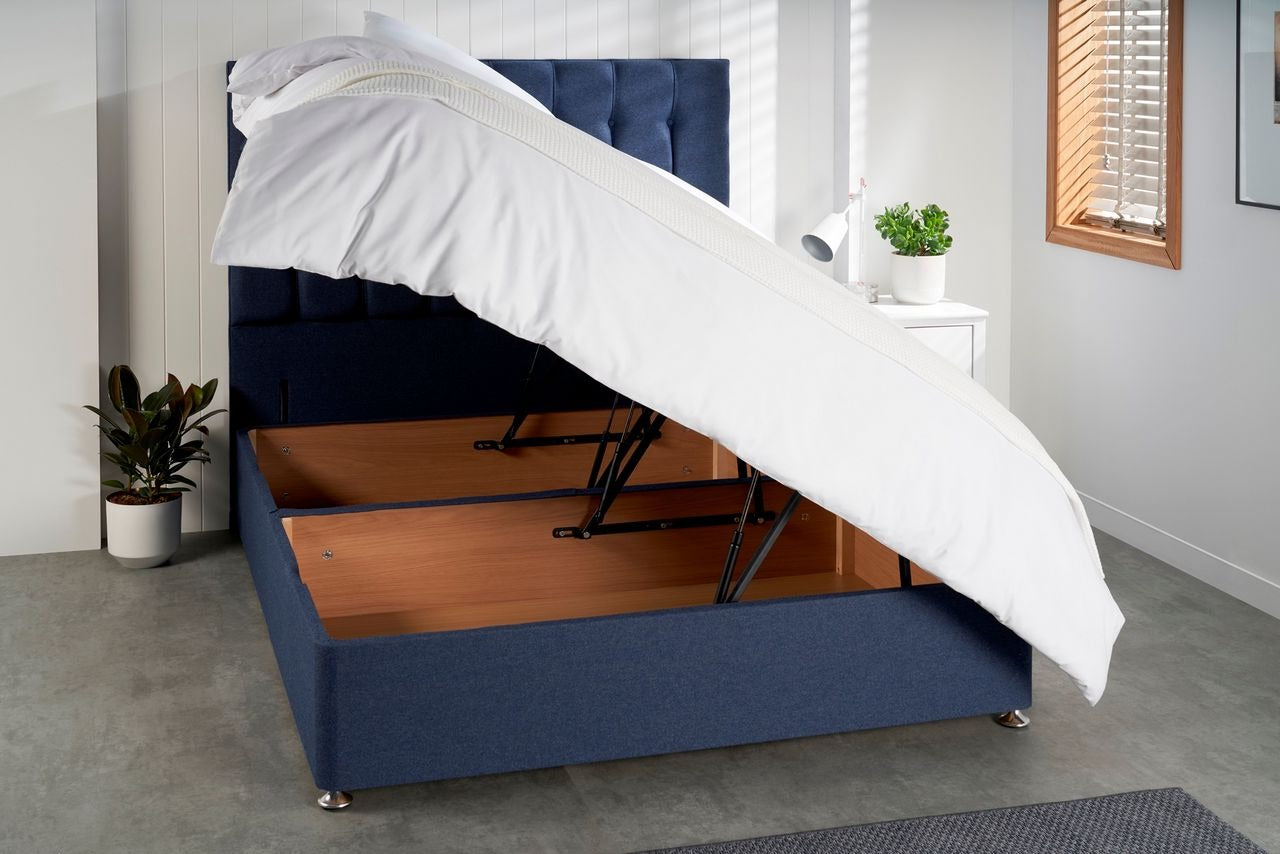You May Also Like
-
Elizabeth Upholstered Divan Base, Without Drawers
Elizabeth Upholstered Divan Base, Without Drawers
Regular price From £99.95 - £314.95Regular priceUnit price / per£188.95Sale price From £99.95 -
Catherine Upholstered Low Divan Base With Chrome Glides - Total Height 19Cm
Catherine Upholstered Low Divan Base With Chrome Glides - Total Height 19Cm
Regular price From £149.95 - £1,488.90Regular priceUnit price / per£299.90Sale price From £149.95 -
Elizabeth Upholstered Divan Base, With 2 Large Side Drawers
Elizabeth Upholstered Divan Base, With 2 Large Side Drawers
Regular price From £149.95 - £369.95Regular priceUnit price / per£307.95Sale price From £149.95 -
Catherine Upholstered Low Divan Base With Shepard Castors, Total Height 21Cm
Catherine Upholstered Low Divan Base With Shepard Castors, Total Height 21Cm
Regular price From £159.95 - £309.95Regular priceUnit price / per£368.95Sale price From £159.95 -
Catherine Upholstered Low Divan Base With Beech Wood Legs , Total Height 30CM
Catherine Upholstered Low Divan Base With Beech Wood Legs , Total Height 30CM
Regular price From £169.95 - £319.95Regular priceUnit price / per£356.95Sale price From £169.95 -
Catherine Upholstered Low Divan Base With Black Wood Legs, Total Height 30Cm
Catherine Upholstered Low Divan Base With Black Wood Legs, Total Height 30Cm
Regular price From £169.95 - £319.95Regular priceUnit price / per£305.95Sale price From £169.95 -
Catherine Upholstered Low Divan Base With Gold Legs, Total Height 27Cm
Catherine Upholstered Low Divan Base With Gold Legs, Total Height 27Cm
Regular price From £169.95 - £319.95Regular priceUnit price / per£339.95Sale price From £169.95 -
Eleanor Storage Ottoman Bed Base - Side Lift
Eleanor Storage Ottoman Bed Base - Side Lift
Regular price From £249.95 - £1,406.95Regular priceUnit price / per£524.95Sale price From £249.95 -
Eleanor Storage Ottoman Bed Base – End Lift
Eleanor Storage Ottoman Bed Base – End Lift
Regular price From £249.95 - £1,406.95Regular priceUnit price / per£549.95Sale price From £249.95 -
Anne Luxury Upholstered Divan Base, Without Drawers
Anne Luxury Upholstered Divan Base, Without Drawers
Regular price From £259.00 - £1,667.95Regular priceUnit price / per£518.00Sale price From £259.00
Your Cart
You May Also Like
-
Elizabeth Upholstered Divan Base, Without Drawers
Elizabeth Upholstered Divan Base, Without Drawers
Regular price From £99.95 - £314.95Regular priceUnit price / per£188.95Sale price From £99.95 -
Catherine Upholstered Low Divan Base With Chrome Glides - Total Height 19Cm
Catherine Upholstered Low Divan Base With Chrome Glides - Total Height 19Cm
Regular price From £149.95 - £1,488.90Regular priceUnit price / per£299.90Sale price From £149.95 -
Elizabeth Upholstered Divan Base, With 2 Large Side Drawers
Elizabeth Upholstered Divan Base, With 2 Large Side Drawers
Regular price From £149.95 - £369.95Regular priceUnit price / per£307.95Sale price From £149.95 -
Catherine Upholstered Low Divan Base With Shepard Castors, Total Height 21Cm
Catherine Upholstered Low Divan Base With Shepard Castors, Total Height 21Cm
Regular price From £159.95 - £309.95Regular priceUnit price / per£368.95Sale price From £159.95 -
Catherine Upholstered Low Divan Base With Beech Wood Legs , Total Height 30CM
Catherine Upholstered Low Divan Base With Beech Wood Legs , Total Height 30CM
Regular price From £169.95 - £319.95Regular priceUnit price / per£356.95Sale price From £169.95 -
Catherine Upholstered Low Divan Base With Black Wood Legs, Total Height 30Cm
Catherine Upholstered Low Divan Base With Black Wood Legs, Total Height 30Cm
Regular price From £169.95 - £319.95Regular priceUnit price / per£305.95Sale price From £169.95 -
Catherine Upholstered Low Divan Base With Gold Legs, Total Height 27Cm
Catherine Upholstered Low Divan Base With Gold Legs, Total Height 27Cm
Regular price From £169.95 - £319.95Regular priceUnit price / per£339.95Sale price From £169.95 -
Eleanor Storage Ottoman Bed Base - Side Lift
Eleanor Storage Ottoman Bed Base - Side Lift
Regular price From £249.95 - £1,406.95Regular priceUnit price / per£524.95Sale price From £249.95 -
Eleanor Storage Ottoman Bed Base – End Lift
Eleanor Storage Ottoman Bed Base – End Lift
Regular price From £249.95 - £1,406.95Regular priceUnit price / per£549.95Sale price From £249.95 -
Anne Luxury Upholstered Divan Base, Without Drawers
Anne Luxury Upholstered Divan Base, Without Drawers
Regular price From £259.00 - £1,667.95Regular priceUnit price / per£518.00Sale price From £259.00
